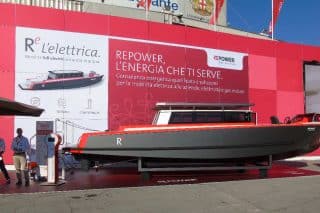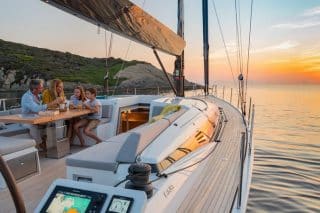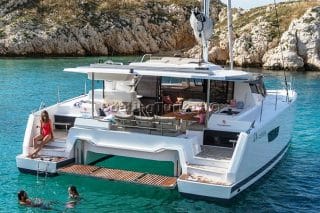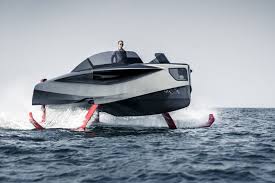Fast & foiling, sustainable & recyclable—and a wider array of sizes and designs. Here are our impressions after touring the biggest boat show on the planet.
This January, almost 2,000 exhibitors from 68 countries occupied 220,000 square meters of exhibition area in Düsseldorf, Germany. These numbers are huge in the boat industry. Apart from making Boot the world’s biggest boat show, they also make Düsseldorf the place to go if you want to know what is happening in the boat market, and what directions trends and tendencies are moving in. Here is a quick version of the 2018 market tendencies.
Fast, Wet and Wild
Unsurprisingly, one very visible trend is foiling. The number of small, fast dinghies and sporty multihulls are on the rise in general, and this also goes for lightweight planing vessels without foils. People seem to like fun, fast sailing in smaller boats.
In this corner of the market, current designs, materials and technology can really make a difference. The result is a wide array of new boats with stunning performance. Some examples are Easy to Fly, RS-21, Astus 20,5 and Aeronamics Flo1. Some are high-budget, advanced boats, some are simple, very affordable boats. And a lot are somewhere in the middle.
Slow, Green and Clean
Another trend is green technology, fuel savings and sustainable production. This very much involves motorboats and a growing tendency towards lightweight boats with low planing thresholds and, as a result, low fuel consumption.
These boats are of course designed with an eye for electrical engines, but in most cases you can still choose a diesel or petrol engine. “Range fear” is still a topic, even though range with electrical propulsion increases every year. An advantage to these boats is that even engines running on fossil fuels can be smaller, cheaper and use much less fuel. Examples are Loxo 32 by Pogo and Rand Leisure 28.

The Rand Leisure 28 sustainably produced and available with advanced electric engine systems (Courtesy of Rand)
On the equipment side of things, a lot of development of electrical engines and batteries is currently ongoing. Market leaders in this area are Torqeedo and OceanVolt.
Production methods and materials seem to be slowly developing in a more sustainable direction too. Still, this is for the moment a small drop in the ocean of large-scale commercial production, but if some manufacturers manage to build sound, lasting business models on this basis, others will follow. It is actually possible today to produce boats with at least partially recyclable or organic materials. This is already being done by Bente Yachts and Rand Boats, and could prove to be a fast-growing trend.
Big, Cool and Fast
Looking around the huge exhibition space, there is also a very visible trend in the somewhat opposite direction: Extremely fast and lavishly designed powerboats—high-end products with very cool and innovative lines. A clear example is the Axopar Brabus Shadow 800.
Overall, looking at the size of boats at Boot Düsseldorf, the spectrum seems to be widening in both directions. There is a growing number of small boats, but there is also definitely a growing number of very large vessels—for example, Bavaria Yachts showed off their new 65-foot model.

There is a growing number of very large vessels, such as the new Bavaria C65 (Courtesy of Bavaria Yachts)
And finally, it’s worth mentioning the big cruising catamarans, with their ever-increasing space and comfort. Year by year they are edging themselves into the broader consumer market, after being a niche for charter and blue-water sailing for decades.







